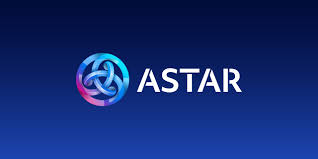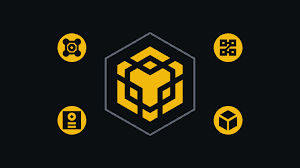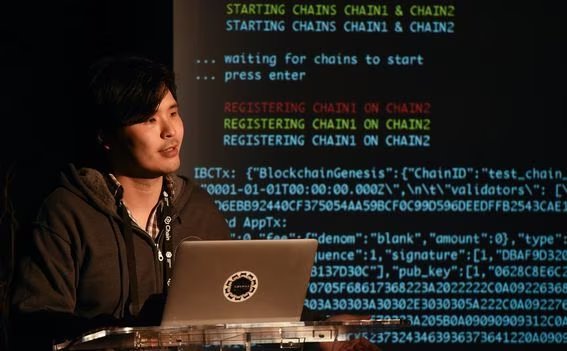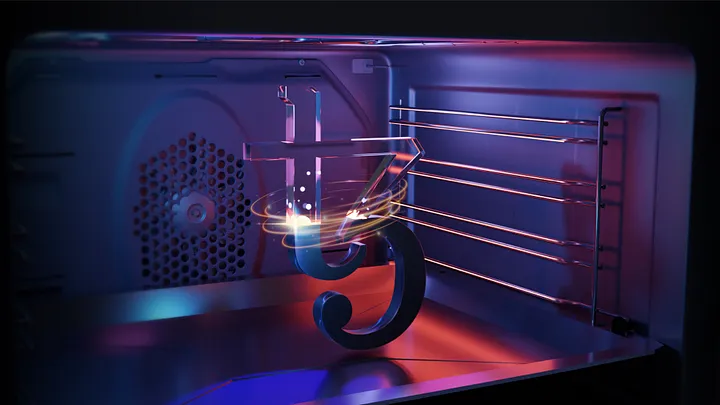TL;DR: With a new update or project being released almost every day, it’s clear the crypto ecosystem is constantly evolving. Hedera Hashgraph has gone through a lot of ups and downs to reach the level it’s at today — but it’s just the beginning. Knowing what brought it here and why it was created will lead you to make better decisions when investing or simply using Hedera Hashgraph.
In this article, we’re gonna dive into the Hedera Hashgraph ecosystem, answer all the $HBAR related questions and even more. Prepare yourself for a history lesson and a journey to the future of Hedera Hashgraph!
What is Hedera Hashgraph (HBAR)?
Hedera Hashgraph is a Layer 1 network launched in 2018 by Leemon Baird. It is a smart contract platform that uses a unique data structure for grouping transactions called a hashgraph.
Hashgraphs are not entirely blockchains. Instead of using the computational power of large networks to verify transactions, transactions are recorded and confirmed via a protocol that uses node communication.
Since validators are relieved from the burden of computation, the algorithm can process transactions much faster than any other blockchain. What’s more, individuals and organizations who want to run hashgraph nodes will not need to purchase expensive custom mining rigs. Instead, they will be able to run hashgraph nodes using their home computer.
To achieve security, Hedera is running a limited number of nodes, making it a highly centralized network. This differs from how most traditional blockchains achieve consensus, in which the state of the blockchain is determined by users who propose blocks to be added to the chain in a market competition open to anyone.
HBAR is an deflationary token due to the way its tokenomics have been planned. This means that new HBAR coins are created with each block and the block reward decreases over time. The Hedera Hashgraph inflation rate sits currently at around 23% and gets lower every year.
The tokenomics of Hedera Hashgraph also specifies a maximum amount of tokens that will ever be created. The maximum amount that will ever be minted by the protocol is 50 billion HBAR.
For more details about how you can earn more Hedera Hashgraph by running a validator node at home check out our Hedera Hashgraph Mining & Staking guide. It includes the exact steps and best methods of earning more crypto like $HBAR in 2024 and beyond.
When was Hedera Hashgraph (HBAR) created?
Hedera Hashgraph (HBAR) was created during Leemon Baird’s work at the Academy Center for Cyberspace Research.
Work began on the Hedera chain in 2016, but before that, a couple of important events happened. Most events revolve around the Hedera Hashgraph CEO and Founder, Leemon Baird.
The first meaningful event is professors Leemon Baird’s invention the hashgraph consensus.
Research started in mid-2010s, with the goal of achieving asynchronous Byzantine Fault Tolerance (BFT) at scale. Coincidentally, Bitcoin was released around that same time, but Leemon said he drew no inspiration from Bitcoin. Hashgraph takes a different approach to achieving consensus.
To understand what Leemon was trying to achieve, let’s briefly touch on the concept of Byzantine fault tolerant. The term Byzantine fault tolerance is describing a scenario in which a network reaches consensus even if some of the participants are malicious. The ‘asynchronous’ property of Byzantine fault tolerance overcomes a challenge of fault tolerance, which is that of timing.
Many forms of Byzantine fault tolerance assume there is a maximum threshold of message latency when coming to a consensus. In other words, a malicious majority of nodes could overcome the fair participants by sending their messages first. An asynchronous byzantine fault tolerant (ABFT) network eliminates this assumption and allows for some messages to be lost or indefinitely delayed.
Leemon has been preoccupied with reaching this specific solution for reaching consensus at scale. His invention promised fast consensus in a secure manner, as described above.
Hashgraph is a consensus mechanism based on a voting algorithm combined with the gossip protocol to achieve consensus quickly and securely. In hashgraph, nodes send information to each other until all members of the network is aware of it, hence the name “gossip.” As the database gets updated, each event gets comemorated into what is called a “gossip sync.”
Applying this gossip technique to bigger networks results in information spreading exponentially fast, like wildfire, and soon everybody knows the transactions. Everybody gets every transaction fast. This is different from a blockchain, where a leader (called miner or validator) is selected to add the transactions in the next block.
In a blockchain setup, miners or validators dictate which transactions are placed in the block. By having a gossip system, every participant receives a copy of the latest gossip, and can be sure that all other participants act on the same information.
Another meaningful event was Leemon’s decision to commercialize hashgraph.
In 2016, him and his long-time friend Mance Harmon, co-founded Swirlds Inc. The sole purpose of the company was to develop applications for the hashgraph consensus. This is how Hedera was born.
It’s been 6 years since Dr. Leemon starting working on the hashgraph consensus. According to the whitepaper published in 2016, hashgraph was touting “hundreds of thousands of transactions per second and verifying over one million signatures per second.” Compared to Bitcoin’s 3 TPS, Ethereum’s 20 TPS, and Visa’s 3600 TPS, hashgraph represented a revolution in terms of scalability.
Hashgraph also enables micropayments, which is something blockchain hasn’t achieved. Micropayments are just what they sound like: the exchange of tiny amounts of currency—amounts that currently cost more in fees to send than their actual worth. This feature alone would reform the way transactions are done online.
With the asynchronous byzantine fault tolerance in place, the challenge that remains is to make it “friction-less” for users. That is, to require minimal effort to send and receive the payments within an app or website. The path to a friction-less experience set Hedera on a path to raise funds in order to attract builders to its ecosystem.
Hedera’s vision of being “the fastest, most widely distributed, most secure, enterprise-grade public ledger in the world” attracted high profile contributors early on. To Leemon’s credit, him and the Hedera team conducted 170 meetups around the globe, hosting over 6,500 interested members of the community.
All these efforts paid off, and in the summer of 2018, Hedera had raised $128 million from accredited investors to pursue the idea. Shortly the token sale, Hedera’s network was ready to launch with 3 main services: cryptocurrency, file storage, and support for Solidity smart contracts.
Over the next months, Hedera gradually opened up the network to a long list of Dapp developers. Right out of the gate, developers were interested in building IoT apps, supply chain management, casual games, security tokens, smart contracts for escrow, and more.
By September 2018, Hedera’s HBAR token was trading on exchanges. At launch, the network minted its total supply of 50 HBAR. Around 45% of the tokens were issued to investors and the team, and about 55% was reserved for the Hedera treasury.
Who created Hedera Hashgraph (HBAR)?
Hedera Hashgraph was created by Leemon Baird together with his business partner Mance Harmon.
Leemon Baird is a computer scientist born in the U.S. He worked as a Professor of Computer Science at the US Air Force Academy and as a senior scientist in several labs. Leemon graduated at the United States Air Force Academy in 1989 with a degree in Computer Science. In 2009, he retired from the US Air Force having gained the lieutenant ranking.
In 1999, Leemon received his PhD in Computer Science from Carnegie Mellon University. He holds a record for receiving his PhD faster than any other student in school history, 2 years and 9 months. He also held positions as Adjunct Professor at multiple other prestigious universities, and as a senior scientist in several labs.
Throughout his academic journey, Leemon had multiple patents, and over 100 publications in peer-reviewed journals and conferences in distributed consensus, machine learning, and mathematics.
His most important work was the creation of the hashgraph consensus. Research began in mid-2010s, but the whitepaper has been published in May 31, 2016. In the paper, he describes the concept of “gossip protocol” along with the term “hashgrahp”, a data structure that records who gossiped to whom, and in what order.
Aside from his academic experience, Leemon has been a co-founder of several startups, including two identity-related starts ups, which were acquired.
Leemon and Harmon grew up together in the US Air Force and followed each other from assignment to assignment. In 2015, they both teamed up and co-founded Swirld Inc., a company that leverages the hashgraph consensus to build trusted applications.
Mance Harmon is the co-founder of Hedera, and co-founder and co-CEO of Swirlds. He previously worked as a Program Manager for a very-large scale software program for the Missile Defense Agency, and served as the Course Director for Cybersecurity at the US Air Force Academy.
In his early career, Harmon worked as a research scientist in Machine Learning at the Air Force Research Laboratory: Wright Laboratory. His biggest project before Hedera was working as the Head of Architecture and Labs at Ping Identity, a cybersecurity company.
Two years after developing hashgraph under Swirdl, the two co-founders decided to launch the network as a separate project, called Hedera Hashgraph.
How is the Hedera Hashgraph (HBAR) token used?
The HBAR token is the native token for the Hedera Hashgraph network. Most assets in the Hedera Hashgraph ecosystem are denominated in HBAR, which makes it the default unit of account.
HBAR is the fuel that powers transactions and block creation on the Hedera Hashgraph chain. We sometimes refer to it as “gas.” Its primary use case is securing the network and keeping actors aligned to the same principles.
Making a transaction on the Hedera Hashgraph network requires a small fee in HBAR, usually between $0.0001 and $0.0005. Because Hedera Hashgraph has a quick time to finality and processes more transactions per second the gas fees quickly add up. This small fee is paid by users and goes to validators for doing their work.
Hedera offers a friendly environment for deploying smart contracts. The cost of deploying a smart contracts on Hedera is fixed at $1. This feature brings much needed predictability for developers and makes it economically viable to build on top of Hedera.
Hedera Hashgraph is currently listed on multiple exchanges. The major ones are Binance, Coinbase and Kraken. If you want to skip ahead and learn how to earn more Hedera Hashgraph by running a validator node at home check out our Hedera Hashgraph Mining & Staking guide. It includes the exact steps and best methods of earning more crypto like $HBAR in 2022 and beyond.
Who is developing Hedera Hashgraph (HBAR) now?
Development on Hedera Hashgraph started in 2016 by a company named Swirld Inc. After validating their idea, Leemon Baird and Mance Harmon created Swirld.
Swirld is a company founded in 2016 that handles the development of the Hedera Hashgraph (HBAR) blockchain and protocol. The core team is solely responsible for the actual implementation of the codebase. Hedera’s code is publicly available on GitHub, where open source developers can contribute via Hedera Improvement Proposals (HIPs).
Changes to the software are voted by the Hedera Governing Council. Its board is designed to comprise of 39 term-limited members at scale, from a variety of industries and geographies. Members do not pay a fee to join, and do not make money from interest payments.
Hedera’s governance model protects users by eliminating the risk of forks, guaranteeing the integrity of the codebase, and committing to make the source code open for review. Council members serve a maximum of two consecutive three-year terms and act as stewards of the platform.
The Hedera network does not require mining or proof of work, and further plans to address ongoing decentralization concerns by separating governance from consensus. The governance model is based on the original model used by National Bank Americard Inc., founded in 1968, and later renamed VISA. It is designed in a way that ensures the governing council can be trusted to do what’s in the best interest of the Hedera network, that no single company has control, and that the Council cannot be maliciously influenced by individual members or node operators.
What are the latest updates on Hedera Hashgraph (HBAR)?
Hedera Hashgraph in 2019
September 18, 2019 was the year when Hedera made its mainnet beta open to the public. Open access means that the general public can create an account and start building Dapps on Hedera Hashgraph network.
Hedera launched with 26 dapps. Among them are AdsDax, a decentralized advertising platform and marketplace, Certara, a global, model-informed drug development and decision support leader, and Chainlink, which provides Hedera dapps with oracle services.
With open access, the Hedera Hashgraph offers three services: crypto transactions, capped to 10,000 TPS, 2) smart contract functionality and file service. The team plans to increase transactions speeds gradually in order to keep the network stable.
Shortly after the mainnet, Hedera Hashgraph announced its first fiat on/off ramp. CarbonUSD, or CUSD would become available to users who make fiat deposits via ACH or Wire Transfer with Hedera’s financial partner, Nevada-based Prime Trust. This means developers can integrate stablecoin payments to their dapps.
In the beginning of the year, Hedera has announced the initial group of Governing Council Members. The role of the governing council is bring stability and continued decentralization to the Hedera Hashgraph network. The initial members are Deutsche Telekom, DLA Piper, Magazine Luiza, Nomura Holdings, Inc., and Swisscom Blockchain AG, representing big names from industries such as telecommunications, technology, financial services and retail industries.
On August 12, IBM and Tata Communications annonunced they are joining the Governing Council. On the partnership, Jerry Cuomo, Vice President of Blockchain Technologies at IBM, said that Hedera will help them simplify the deployment of Hyperledger Fabric in the enterprise.
Towards the end of the year, Hedera announuced a program for encouraging builders to come. Hedera Boost pledged their support to startups that built on Hedera’s network. Developers were promised $1000 worth of HBAR to subsidize transaction fees in addition to the guidance from the core team.
Hedera Hashgraph in 2020
In 2020, Hedera Hashgraph benefited from constant growth and managed to score multiple partnerships. Some of the biggest progress was made on the product development side.
On Feburary 13, the team announced that the Hedera Consensus Service (HCS) is open to developers. For builders, this means they can incorporate the Hedera consensus to their dapp, benefitting from hashgraph’s high-throughput and security. A total of 56 customers were delighted by the launch, outlining how easy it was to use hashgraph for their organization.
On April 21, Hedera updated the Consensus Service to include compatibility with Hyperledger Fabric and Coda. Both of these solutions represent tooling options for enterprises runing their own blockchain. Hedera also planned to include Hyperledger Avalon, Quorum at some point.
Hedera announced the early availability of beta tools to manage Decentralized Identifiers (DIDs) and Verifiable Credentials via the Hedera Consensus Service. The fundamental value of Distributed Ledger Technology is to ensure data security and integrity. With the introduction of Decentralized Identity, enterprises could store their sensitive data on their computers as opposed to storing it on the Hedera node. Instead, Hedera network acts as the highway for communicating that data in a reliable manner.
One of the biggest announcement was on February 11, when Google joined the Governing Council as a node maintainer. Hedera is set to use Google Cloud to host its public testnets and Hedera Consensus Service ecosystem. This allows Hedera developers to benefit from Google’s geographical coverage and infrastructure. Up to this point, the Governing Council reached 13 out of 39 members.
Few weeks after Google’s introduction, another big company pledged its allegiance to the Governing Council. LG Electronics took the 14th seat in the council.
Good news continued to compound for Hedera as one of their dapps, AdsDax broke the record for transactions per second. AdsDax, a service for selling advertisements has achieved over 1300 TPS on Hedera Hashgraph’s enterprise grade distributed ledger. The success of AdsDax propelled hashgraph in the eyes of enterprises.
As the popularity of Hedera Hashgraph grew, they managed to secure a seat at World Wide Web Consortium (W3C), an international organization that works to develop Web standards. The W3C consortium is comprised of prestigious universities and companies all over the globe. Members include MIT, Adobe, Alibaba Group, Amazon, Apple, Coinbase, and many others.
In Q4, Hedera started offering early access to the Hedera Token Service (HTS). Using HTS, developers can issue and configure tokens on Hedera, taking full advantage of Hedera Hasghraph’s native performance, security, stability, and governance. In other words, developers would soon be able to issue their projects with native tokens, as seen with other blockchains.
Hedera Hashgraph in 2021
2021 was Hedera Hashgraph’s best year to date, reaching an all time high of $0.571. This was heavily influenced by a few key events and updates.
One of the most important events of the year was the mainnet launch of the Hedera Token Service (HTS) of February 9. In the previous months, Hedera had been working closely with projects, experimenting with the process of integrations and app support. This effort culminated with 60 projects going live with their native Hedera tokens. The intial ecosystem comprised wallets, exchanges, issuers, council members, and network explorers.
HTS was offering fungible and non-fungible tokens (NFTs) services. More importantly, tokens issued with Hedera would benefit from the same performance, security, and efficiency as HBAR cryptocurrency. Another benefit was the entwork fees, which cost less than a cent for any kind of asset. Furthermore, the cost of creating a token and maintaining its mechanics was under $10. By contrast, the same operations on Ethereum would cost thousands of dollars.
A couple months later, Hedera reached another milestone: one billion transactions on the n network. It took Hedera mainnet one year, six months, and 28 days to reach this number. For context, Bitcoin had recorded 700 million transactions, and Ethereum surpassed 1 billion transactions since inception.
The speed at which the Hedera mainnet surpassed one billion transactions validated its use case for microtransactions, especially considering the network was primed for more scalability. Hedera Consensus Service has been 81% of the past year's transaction types, while HBAR transactions made up 19%.
For the remainder of the year, a few more key members would join the Governing Council. One of them is Chainlink, the industry-leading oracle solution. Other members that joined are DBS Bank, The London School of Economics and Political Science (LSE) and the Indian Institute of Technology Madras (IITM). In total, the Governing Council reached 25 members.
Another significant event was the introduction of a new service called “hashport.” It is a new compatibility tool with other blockchains. Using hashport, users can connect with their wallets, and transact on networks such as Ethereum, Polygon, BNB Chian and Avalanche. The set of validators, called Validato Swarm, remains centralized. It includes Polygon, The Hbar Foundation, Animoca Brands and 6 others.
The hashport tokens represent syntethic versions of the tokens from other chains. They are backed 1:1 by the underlying asset. The hashport portal applies a 0.5% service fee on each porting execution.
Hedera Hashgraph in 2022
The current year has been a powerful one for Hedera Hashgraph. With the release of smart contracts 2.0, Hedera is ready to increase its market share.
The Hedera Smart Contract Service is EVM compatible and runs on Solidity, the same programming language that was used to build Ethereum. Smart Contracts 2.0 introduces extra flexibility for builders. First announced on January 20, the new version of smart contracts will support the Hedera Token Service (HTS). This means that developers can choose to program tokens and smart contracts in their preferred language.
Another interesting feature introduced by Hedera is smart contract rent. Storing the state of the smart contracts inquires costs. The storage fees are usually supported by the developer. If he fails to pay, the network will reject the smart contract. To make things easier, Hedera is working on a renewal fees service where the community can contribute. This feature is being actively explored by Hedera in partnership with the Ethereum community.
Meanwhile, the Governing Council welcomed its newest member, Ubisoft. The game publisher is setting up a Hedera-dedicated track into the Ubisoft Entrepreneurs Lab. The Entrepreneurs Lab supports startups on a global scale, focusing on the future of entertainment. Through this track, Ubisoft and The Hedera Foundation will identify promising projects and startups and provide economic investment.
As of July 21, the staking functionality on Hedera went live. In phase I, users will technically be able to stake their account to mainnet nodes but this will not contribute to a node’s consensus weight (voting power). This initial technical availability release does not reward participants for staking, but enables a level playing field whereby all market participants have the possibility to join the staking program, and avoids giving an unfair advantage to the first few who stake.
Hedera Hashgraph is in a constant growth cycle, and network participants like us can earn more $HBAR without too much hassle or technical knowledge, right from the comfort of our homes.
Learn how to do that in our Hedera Hashgraph Mining & Staking guide, which includes the exact steps and best methods of earning more crypto like $HBAR in 2022 and beyond.



































































